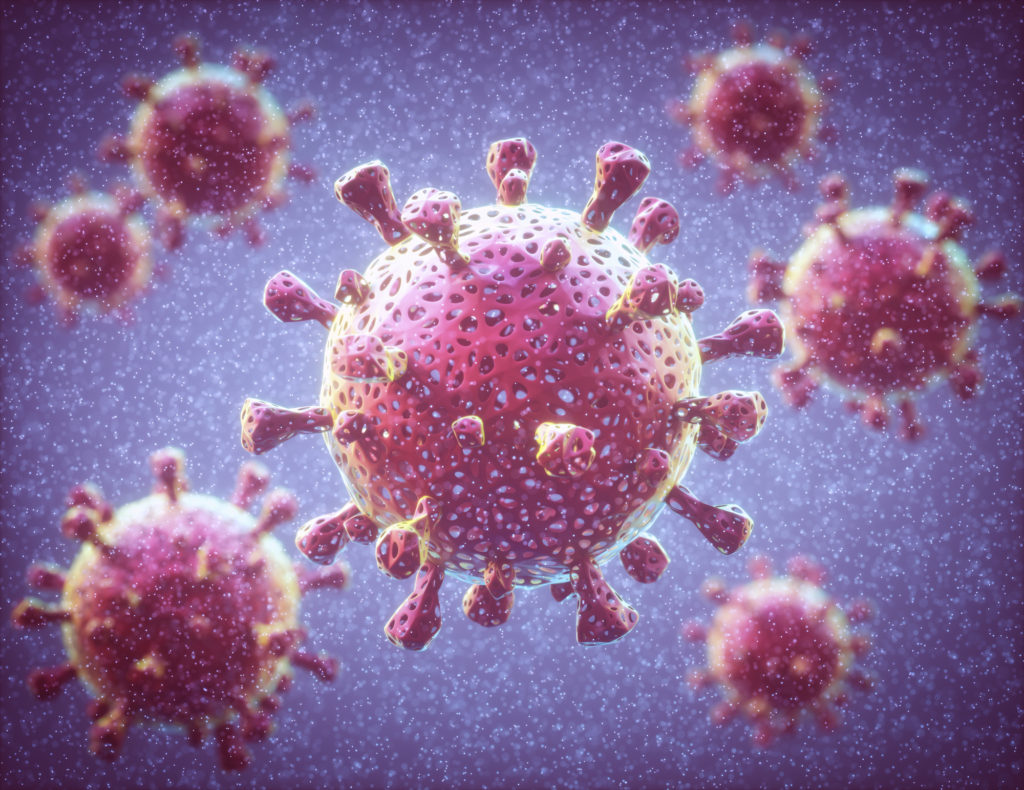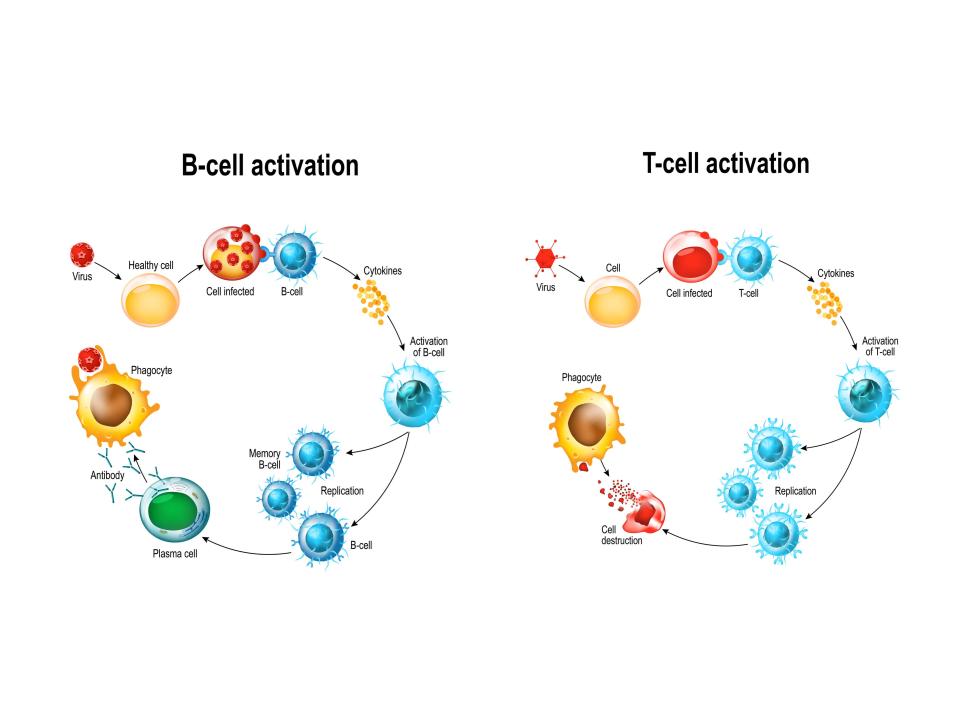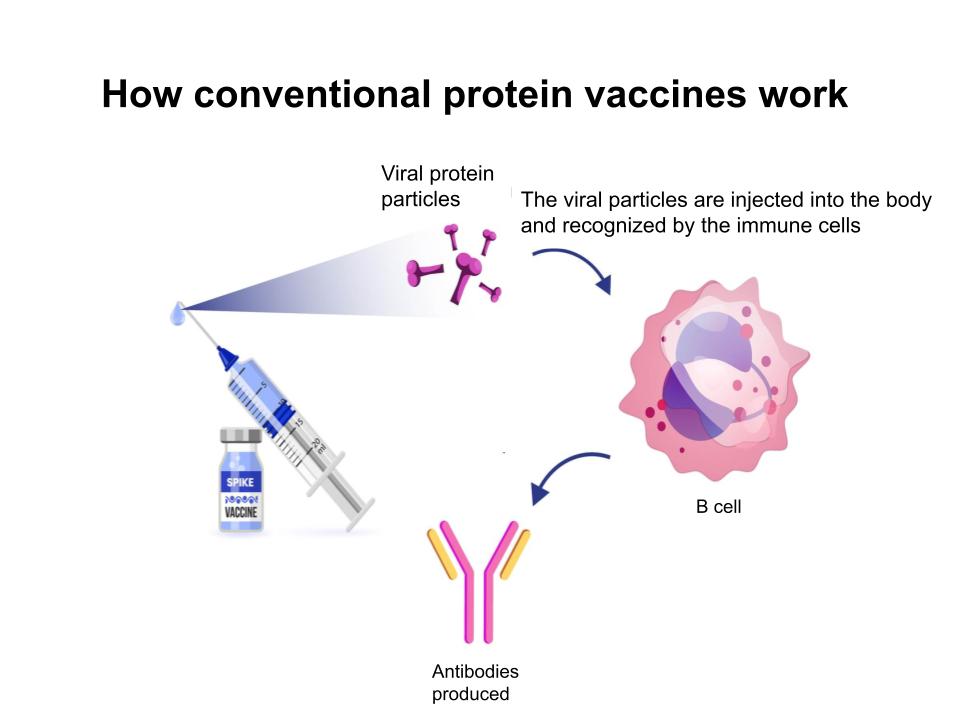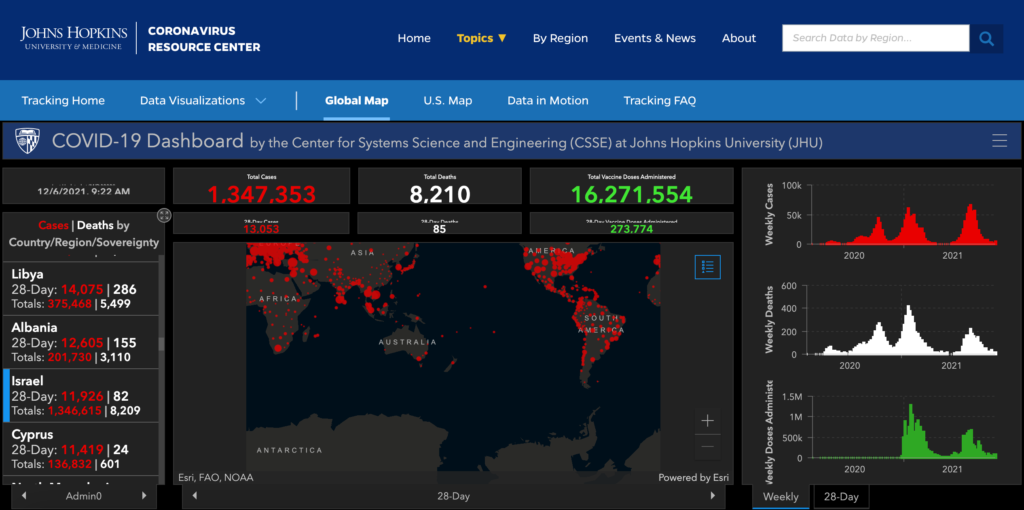Part 1 – Facts 1-5
How are we going to get ourselves out of the mess of this pandemic? The debate is ongoing, some think the way is clear, and others hesitate. As with every debate, there is always some truth on both sides, but fact for everyone is, there are many things we still don’t know. Only time will tell! So maybe, we shouldn’t be too stuck in our ways of thinking.

Here are the first five of ten important facts we do know but tend to overlook.
1 – Viruses have been driving evolution
Viruses aren’t living things, they need a host to survive. They are simply a piece of genetic material (DNA or RNA) in an envelope. Viruses need to enter cells (shown in green) and use its replication machinery to create new viruses. Our cells contain many integrated viruses as the gene flux from virus to cell is far greater than from cell to virus. (1)

Life without viruses doesn’t exist. Viral particles and viral genes are far more abundant in nature than cells and cellular genes. Our only option is to coexist with them. We can’t just make them all go away.
2 – The immune system is our best ally
When a virus enters our body, it’s goal is to replicate. In order to do that it will enter our cells to access their replication machinery. This invasion is called infection, and is usually what causes illness. However, some of the viral particles themselves (for example the spike protein of the SARS Cov-2-virus which causes the disease COVID) can also cause disease.
Our body’s defense mechanism against this invasion is our immune system. Simply put, our immune system launches a B-cell and a T-cell response.
- B cells produce antibodies that attack the viral particles outside the cells
- T cells attack the cells in the body that have been infected by the virus.

It is important to do everything we can to make sure our immune system is strong and ready to defend us when we get infected by pathogens. (See part 2)
3 – VACCINES CAN HELP BUY SOME TIME BUT THEY AREN’T PERFECT
Vaccines help develop immunity by imitating an infection. In conventional vaccines, attenuated, inactivated or subunits of the virus are injected into the body. This should not cause the disease, but it aims to cause an immune response as described above. The T-cell response is usually weak since the injected virus is not functional and cannot infect cells. Once the imitation infection goes away, the body is left with a supply of antibodies, and ideally a few “memory” T-cells, that will remember how to fight that disease in the future. (2)

4 – MUTATIONS WILL ALWAYS OCCUR
A mutation is a change of the structure of a gene, resulting in a variant form that may be transmitted to subsequent generations.
Mutations happen all the time. As a virus replicates, its genes undergo random “copying errors” (i.e. genetic mutations). Mutations can also occur if the virus is under some kind of environmental pressure. Over time, these genetic copying errors can lead to changes in the virus’ surface proteins.
It is possible that vaccinations exert an immunological pressure on the virus. Similar to how antibiotics drive antibiotic resistant bacteria, we can create viruses that are “resistant” to vaccines. Some scientists will say it is the case while others will say the mutations appear more easily where the virus can replicate freely in a large pool of infected hosts. Obviously the scientific world does not agree on this topic. This happens a lot!
Whichever it is, with the SARS-Cov-2 virus, we have both! Pressure on the virus to mutate in the vaccinated group, and a big pool of unvaccinated and other species to mutate freely. Yes! SARS-Cov-2 has been shown to infect and replicate in different animals. So even if everyone got vaccinated, the virus would still find another host, just like the influenza virus. Hence, the virus will always be ahead of us. So chasing it forever with vaccines that only work short term is not the way out of this pandemic.
The good news, however, is that it is not in the virus’ interest to kill its host quickly since the virus can’t replicate without it. The natural selection process leading to new dominant variants will favor more contagious but less deadly variants, as both, infecting more people and keeping them alive, optimizes the spread of the virus.
5 – VACCINES VARY IN EFFICACY
How efficient a vaccine is depends on:
- The amount and variety of antibodies generated.
The more viral particles presented to the immune system by the vaccine, the greater the variety of antibodies produced. If only one viral particle is presented, the antibodies can only recognize this part. For the COVID vaccine, the antibodies only recognize the spike protein. - How fast the virus mutates. If the virus mutates quickly in this particle, the vaccine-induced antibodies won’t recognize and clear the newly mutated virus anymore. SARS-Cov-2 seems to mutate fairly quickly, so the current vaccine may not recognize the new mutations.
- How well the generated immune response clears the virus from the organism and inhibits transmission.
If the virus is sufficiently cleared, the immunized person won’t infect others.
Several studies show that transmission is still high, even in people vaccinated against COVID (3). - The ability of the virus to infect other species, replicate, and come back to humans. A virus that can only infect humans is easier to target with a vaccine (eg. measles, polio, or smallpox have no animal reservoirs). Unfortunately, SARS-Cov-2 has been found to infect and multiply in the animal world as well (4).
What we do have is a vaccine that worked temporarily for the variant it had been developed for to reduce symptoms, hospitalization, and death. As we can see from the John Hopkins Covid Map below (6) a country with high vaccination rates, like Israel, still got a high peak of infections after getting a large part (85%) of the population vaccinated. This can indicate different things:
- that the efficacy of the vaccine does not last very long
- that the vaccine doesn’t work for new mutants
- that it creates an antigen dependent enhancement (ADE).
Indeed, some scientists are concerned about ADE, which occurs when the antibodies generated during an immune response recognize and bind to a pathogen, but they are unable to prevent infection. Instead, these antibodies act as a “Trojan horse,” allowing the pathogen to get into cells and result in more severe illness. (7)

Israel as of Dec 7th, 2021 (red: infected, white: death, green: vaccinated)
Therefore, we cannot solely rely on vaccines to get us out of this pandemic. We should use them more carefully and wisely, to protect our high-risk population, decrease hospitalization and death, but still do everything we can to boost our immune system, while we keep looking for better long term solutions.
To be continued… (See part 2)
Source
(1) https://www.sciencedirect.com/science/article/abs/pii/S1879625713001077
(2) https://www.cdc.gov/vaccines/hcp/conversations/understanding-vacc-work.html
(3) https://www.thelancet.com/journals/laninf/article/PIIS1473-3099(21)00648-4/fulltext
(4) https://www.npr.org/sections/goatsandsoda/2021/11/10/1054224204/how-sars-cov-2-in-american-deer-could-alter-the-course-of-the-global-pandemic
(5) https://www.medrxiv.org/content/10.1101/2021.08.24.21262415v1
(6) https://coronavirus.jhu.edu/map.html
(7) https://www.chop.edu/centers-programs/vaccine-education-center/vaccine-safety/antibody-dependent-enhancement-and-vaccines





[…] (For part 1 click here) […]